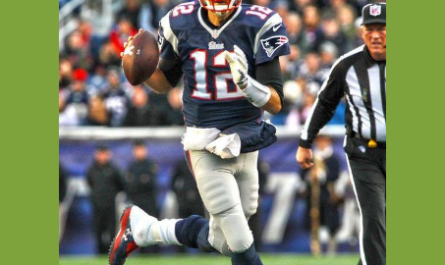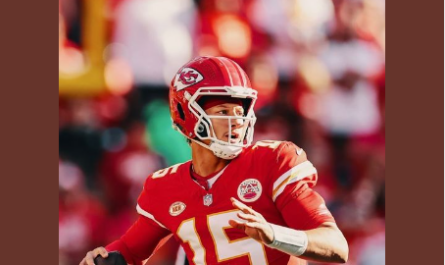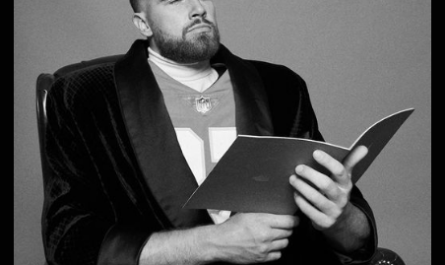The Key to Mahomes’ Magic: His Communication Skills
Patrick Mahomes is widely regarded as one of the most talented quarterbacks in the NFL. At just 26 years old, he already has an MVP award, Super Bowl ring, and multiple Pro Bowl selections to his name. However, Mahomes’ success on the field is not just due to his rocket arm or athleticism. A major factor in his dominance is his exceptional communication skills.
Mahomes’ communication starts before the ball is even snapped. As the quarterback, he is responsible for getting the play call from the coaches and relaying it clearly to his teammates in the huddle. Let’s take a look at some examples from game footage of how Mahomes handles this pre-snap communication.
In a Week 1 matchup against the Browns in 2020, Mahomes brings the offense to the line with around 25 seconds left on the play clock. He uses concise language to convey the play call while also making adjustments based on the defense. “Red 78 max protect, Kelce on the seam. Tyreek, run a go if they blitz.” In just a few short words, he informs the line they have extra blockers, designates Kelce’s route, and provides an adjustment for Hill depending on the blitz. His teammates nod in understanding before lining up.
This type of clear, efficient communication of the game plan is essential. With only seconds before the snap, Mahomes needs to make sure everyone understands their assignment without confusion or delay. His use of positional and route terminology keeps the message simple yet precise. Even with last-second changes at the line, his teammates know exactly what to do thanks to his leadership in the huddle.
Once at the line of scrimmage, Mahomes’ pre-snap communication continues as he identifies defensive weaknesses. Against the Ravens in 2020, he shouts “Kill! Kill!” before changing the play and pointing at a receiver. This simple but effective call audibles to a quick slant over the middle, exploiting the single-high safety look. His teammates react instantly, shifting into their new alignments without delaying the play.
By having full command of the playbook’s language and adjustments, Mahomes can communicate complex changes concisely. A single word or hand signal is all that’s needed to redirect the offense when he notices an opportunity. This situational awareness and ability to adapt on the fly are hallmarks of elite quarterbacks. It allows Kansas City to consistently keep defenses off balance no matter the down or distance.
Once the ball is snapped, Mahomes’ communication doesn’t stop. He continues to direct teammates with verbal cues and nonverbal signals throughout each play. Let’s examine an example from the 2020 AFC Championship game against Buffalo. On a third down late in the fourth quarter, Mahomes drops back looking to pass. Under pressure, he rolls right and points downfield at receiver Demarcus Robinson, calling his number. “DeMarcus, go! Go!” Robinson turns upfield and Mahomes hits him for a critical first down, keeping the drive alive.
Even amid the chaos of avoiding a sack, Mahomes maintains enough clarity of mind to locate an open receiver and vocally target him. His confident tone and direct language leave no doubt which player should run where. Robinson trusts the call and makes the catch, demonstrating the cohesion built through Mahomes’ leadership. Some quarterbacks may freeze under pressure, but Mahomes uses it as an opportunity to make a play through effective communication.
In addition to vocal cues, Mahomes employs nonverbal signals just as frequently. Against the Broncos in 2020, he points emphatically at running back Clyde Edwards-Helaire before the snap. CEH nods and shifts into a wheel route out of the backfield. At the same time, Mahomes gives a hand signal that sends Tyreek Hill streaking deep. Without saying a word, he orchestrates two options with a few quick motions. His mastery of nonverbal communication allows multiple adjustments and reads without cluttering the airwaves.
Interestingly, Mahomes’ communication style also changes based on game situation and score. In close games, he keeps calls short and urgent to maximize tempo. But with a comfortable lead, he uses a calmer demeanor, often just pointing out options without vocalizing. This situational adaptability keeps teammates focused and prevents complacency when ahead on the scoreboard. It’s a subtle but important part of his leadership as the game’s commander-in-chief.
Through dissecting film, it’s clear Mahomes treats every practice, game, and situation as an opportunity to improve. His work to finely tune communication, from precise terminology to nonverbal signals, gives Kansas City a strategic advantage before the ball is even snapped. While natural talent plays a role in any elite athlete’s success, Mahomes’ mastery of his craft through constant refinement is what separates him from his peers. His ability to clearly convey complex schemes in an instant, adapt on the fly, and motivate teammates through any circumstance are all hallmarks of championship-level performance.
In summary, Patrick Mahomes’ communication prowess is a major driving factor in the Chiefs’ sustained excellence. His clarity, concision, leadership, and adaptability when relaying game plans set the stage for explosive offensive production. While few can match his physical gifts, studying Mahomes’ approach provides valuable lessons for any leader aiming to maximize effectiveness through enhanced communication. His mastery of the position at such a young age serves as the gold standard for quarterback play in the modern NFL.



